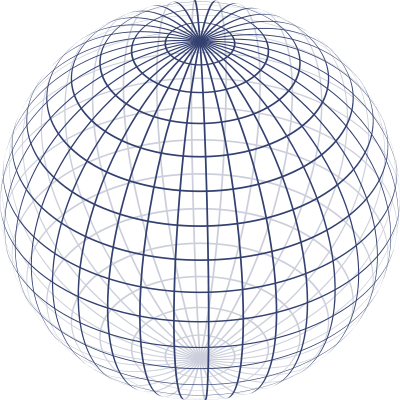A Lie Group (pronounced "Lee") is a Differentiable Manifold, which satisfies the properties of a Group, and which also has the property that its group operations are continuous.
Differentiable Manifold
In general, any object which is nearly 'flat' on small scales is a manifold, and so manifolds constitute a generalization of objects we could live on in which we would encounter the round/flat earth problem.
--Eric W. Weisstein et. al. "Manifold"
A sphere and a torus are just two examples of smooth (aka differentiable) manifolds. The earth, as it is a sphere, is locally "flat" and so it appears flat when we are on it, but at a distance we can see that it is actually a sphere. A population living on a torus would encounter a similar phenomenon.


Most smooth manifolds, however, are not as easy to picture and think about as are a sphere and a torus. Although the formal definition of a smooth manifold is ocmplex, it will be easier to understand it in terms of a circle, sphere, or torus instead of as an abstract collection of ideas.
An n-dimensional differentiable manifold is a set $$M$$ and a family $${\gamma_1,\gamma_2,\dots}$$ of injective functions from domains in $$\mathbb{R}^n$$ into $$M$$ such that:
- For each $$i$$ the domain $$U_i$$ of the function $$\gamma_i$$ is an open subset of $$\mathbb{R}^n$$. The domains $$U_i$$ and the functions $$\gamma_i$$ are called coordinate patches.
- The union of the coordinate patches cover $$M$$. That is, $$\gamma_1\left(U_1\right)\cup\gamma_2\left(U_2\right)\cdots = M$$.
- The coordinate systems are compatible on overlaps. That is, if we consider the overlaps $$W_{ij} := \gamma_i\left(U_i\right)\cap\gamma_j\left(U_j\right)$$ then the sets $$\gamma_i^{-1}\left(W_{ij}\right)$$ and $$\gamma_j^{-1}\left(W_{ij}\right)$$ must be open in $$\mathbb{R}^n$$ and the transition functions $$\Gamma_{ji}:=\gamma_j^{-1}\circ\gamma_i : \gamma_i^{-1}\left(W_{ij}\right)\rightarrow\gamma_j^{-1}\left(W_{ij}\right)$$ must be infinitely differentiable.
The next page explores how the definition applies to the unit circle.